Autore: Robert Luo
Bird damage has long been a persistent problem across multiple sectors, including agricultural cultivation, power plant operations, and airport management. Bird activity not only leads to crop yield reductions and power equipment failures but also poses potential aviation safety risks. Traditional bird deterrent methods, such as manual scaring or installing protective netting, are either inefficient or costly, and may harm birds. The emergence of solar-powered ultrasonic bird repellers offers an environmentally friendly, efficient, and sustainable solution to this problem. This article will provide a detailed overview of how solar-powered ultrasonic bird repellers work, their application scenarios, key advantages, and essential considerations for purchasing and usage, helping readers gain a comprehensive understanding of this innovative bird deterrent technology.

The negative impact of bird damage on various industries far exceeds expectations.
1. Agricultural Sector:
During the fruit-bearing season and grain ripening period each year, birds such as sparrows, magpies, and crows peck at fruits and seeds, causing fruit damage and sharp declines in yield. In apple orchards, for instance, severe bird damage can reduce yields by 20%-30%. Damaged fruit also becomes prone to bacterial growth, compromising the quality and market value of remaining produce. Additionally, bird droppings contaminate leaves and fruit, increasing the risk of pest and disease outbreaks.

2. The power industry is particularly vulnerable to bird damage
Birds often build nests on transmission line towers and insulators. Debris like branches and wires in these nests can cause short circuits and circuit breakers to trip. Bird droppings are conductive; long-term accumulation corrodes insulators, degrading their insulation properties and potentially triggering widespread power outages. Statistics indicate that bird-related power failures account for 15%-20% of all line failures globally each year, posing significant threats to the safe and stable operation of power systems and residential electricity supply.
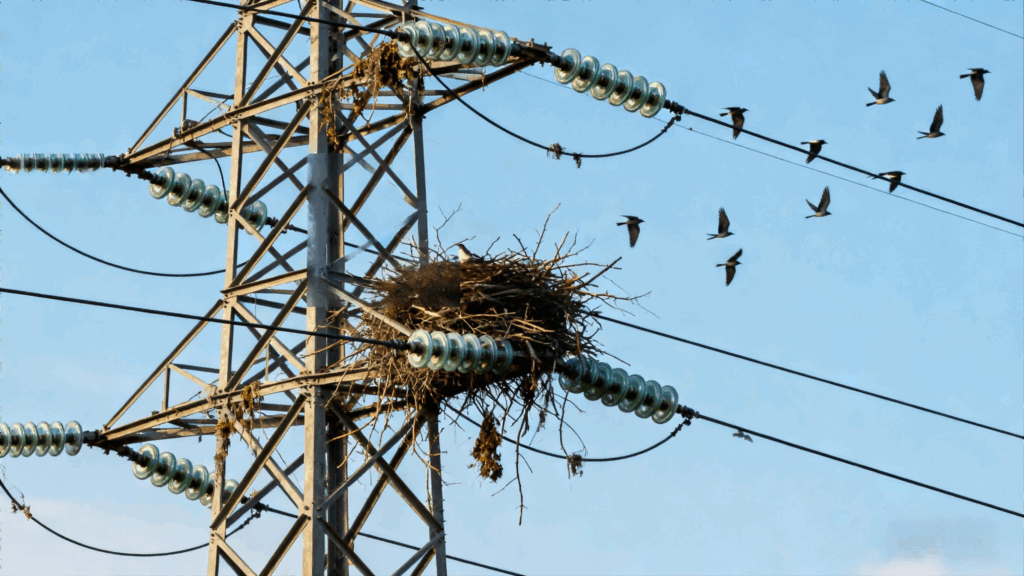
3. Bird strikes in airport areas directly impact aviation safety
Bird collisions with aircraft (known as “bird strikes”) can damage critical components like engines and windshields, causing flight delays at best and catastrophic crashes at worst. Globally, bird strikes cause over $1 billion in annual aviation economic losses, making airport bird control critical. Additionally, sectors like warehousing, logistics, and historic building preservation frequently face issues such as cargo contamination and structural corrosion due to bird nesting and excrement.
Traditional bird control methods struggle to address these complex scenarios. Manual dispersal requires significant manpower, and birds readily adapt, making its effects short-lived. Protective netting can block birds but involves high installation costs, difficult maintenance, and impacts regional aesthetics and ecosystems. Chemical repellents may harm birds and humans, failing to meet environmental standards. Against this backdrop, solar-powered ultrasonic bird repellers have emerged as the mainstream choice in the bird control market due to their unique advantages.

The solar-powered ultrasonic bird repeller is an innovative device integrating solar power technology with ultrasonic bird deterrence principles. Its core advantages lie in being “environmentally friendly and harmless,” “energy-efficient and sustainable,” and “intelligent and effective.” Its operational mechanism comprises two key modules:
1. Solar Power Module: Self-Sustaining Power for Diverse Environments
Equipped with high-efficiency monocrystalline or polycrystalline silicon solar panels, the device converts sunlight into electricity during daylight hours. Part of this energy directly powers the bird repellent module, while the remainder is stored in lithium batteries, ensuring continuous operation during nighttime or cloudy conditions. Unlike traditional bird repellers reliant on mains power or batteries, solar power eliminates wiring needs and power line constraints. Installation is effortless in remote farmlands, mountainous transmission towers, or open airport runways.
Additionally, the solar power module boasts excellent weather resistance. The solar panel surface undergoes anti-UV and anti-corrosion treatment, while the lithium battery features a high-capacity, long-cycle-life design. It operates stably in harsh environments ranging from -30°C to 60°C, adapting to diverse regional climates and reducing long-term maintenance costs.
2. Ultrasonic Bird Repellent Module: Intelligent Frequency Modulation for Comprehensive Coverage
The ultrasonic bird repellent module is the core of the device. operating on the principle that birds are sensitive to specific ultrasonic frequencies (most birds’ hearing ranges from 20kHz to 60kHz, far exceeding human hearing limits). By emitting irregularly modulated ultrasonic waves, it stimulates birds’ auditory nervous systems, inducing discomfort (such as agitation or fear) that prompts them to voluntarily leave the deterred area. This approach causes no physical harm to birds, aligning with ecological conservation standards. To prevent birds from developing resistance, high-quality solar-powered ultrasonic bird repellers employ “intelligent frequency modulation technology.” This automatically adjusts the ultrasonic frequency, intensity, and emission intervals, typically covering a range of 15kHz-80kHz. This enables precise repelling of different bird species, such as sparrows, pigeons, crows, and hawks. Some high-end devices incorporate infrared sensors that automatically boost ultrasonic intensity when birds approach. This “active when present, low-power standby when absent” operation further conserves energy and extends device lifespan.
Additionally, some solar-powered ultrasonic bird repellers integrate light-based deterrence (e.g., strobe LED lights). Leveraging birds’ aversion to intense light, these devices use ultrasonic waves during daylight hours and combine light effects at night for dual-action repellency. This achieves “24/7 uninterrupted protection.”
Compared to traditional bird control methods, solar-powered ultrasonic repellents excel in environmental friendliness, cost-effectiveness, and practicality. Their key advantages include:
1. Environmentally Friendly and Harmless, Protecting Ecosystems
Traditional bird control methods—such as chemical repellents that may poison birds or protective nets that can entangle and injure them—pose risks. Solar-powered ultrasonic bird repellers, however, use physical sound waves to deter birds without any chemicals or direct harm. By disrupting their habitat, they encourage birds to leave, effectively addressing bird damage while preserving ecological balance. This approach aligns with the principle of “harmonious coexistence between humans and nature.”
2. Energy-Efficient and Cost-Effective for Long-Term Use
Powered by solar energy, these devices eliminate the need for grid electricity. After initial installation, only minimal maintenance is required (e.g., cleaning solar panels, checking battery status), resulting in virtually no additional electricity costs. Compared to traditional electrically powered repellents, long-term operational expenses are significantly reduced. Unlike conventional repellents requiring frequent battery replacements, solar power also minimizes labor and material costs associated with battery maintenance, making it particularly suitable for sustained, large-scale bird control needs.
3. Flexible Installation for Diverse Scenarios
Compact in size (typically 20cm-30cm) and lightweight, the solar-powered ultrasonic bird repeller offers versatile mounting options. It can be secured via brackets to ground surfaces, poles, fruit trees, rooftops, or other locations. Installation height is adjustable based on requirements (generally recommended between 1.5m-3m to maximize ultrasonic coverage). Whether deployed in farmlands, orchards, substations, airports, warehouses, historic buildings, fish ponds, or other settings, suitable installation solutions can be selected based on actual needs without complex construction.
4. Intelligent and Efficient with Long-Lasting Bird Repellent Effects
Utilizing intelligent frequency modulation technology and infrared sensing capabilities, solar-powered ultrasonic bird repellents prevent birds from developing resistance, ensuring sustained and stable repellent effectiveness. Unlike manual deterrence methods that only address symptoms, the device operates 24/7 with broad coverage (typically 10m-30m radius per unit, depending on model and environment). It effectively reduces bird presence and activity in targeted areas, fundamentally lowering the risk of bird damage. Some models also feature remote control functionality, allowing users to monitor device status and adjust settings via a mobile app for convenient remote management.
Leveraging the aforementioned advantages, solar-powered ultrasonic bird repellents have been widely adopted across various sectors, emerging as an effective solution for addressing bird damage issues in diverse environments:
1. Agricultural Sector: Safeguarding Crops
Installing solar-powered ultrasonic bird repellers in orchards (apple, pear, vineyards, etc.), farmlands (rice paddies, wheat fields, cornfields, etc.), and greenhouse facilities effectively prevents birds from pecking at fruits and seeds. For instance, during grape harvest season, birds often peck at grapes, causing damage and rot. Installing repellers reduces bird damage by over 90%. In greenhouses, the devices also prevent birds from nesting inside, minimizing pest transmission risks and safeguarding crop quality.
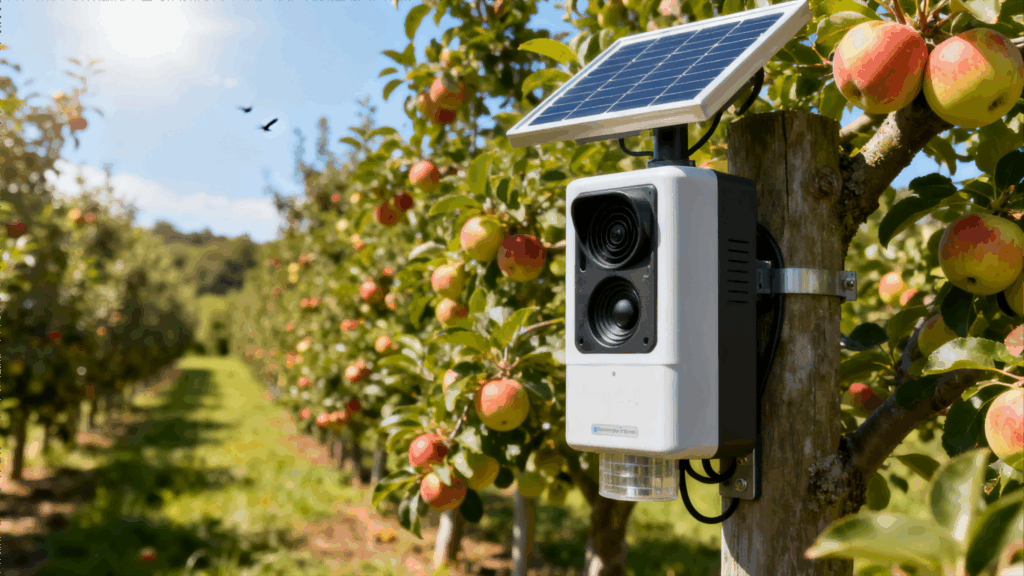
2. Power Industry: Ensuring Power System Stability
Solar-powered ultrasonic bird repellers installed near power facilities—such as transmission line towers, substations, and distribution rooms—prevent birds from nesting and perching. Installed near crossarms, insulators, or perimeter walls, the devices emit ultrasonic waves to disrupt bird activity, preventing nests and debris from causing line short circuits and reducing power outages due to bird strikes. Solar power supply adapts to off-grid environments, simplifying maintenance.
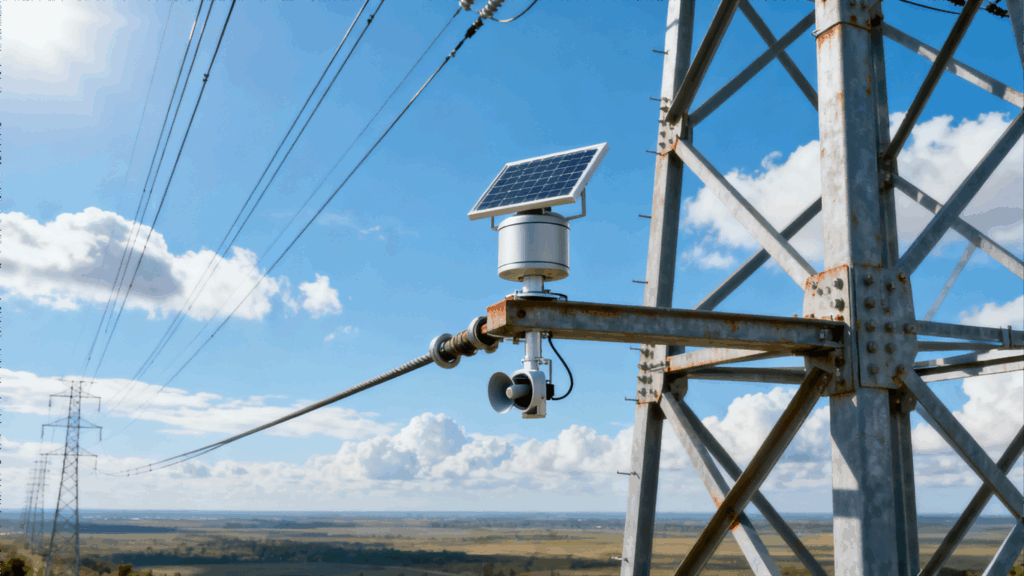
3. Airport Sector: Fortifying Aviation Safety
Airport runways, aprons, and taxiways are critical bird hazard control zones. Solar-powered ultrasonic bird repellers can be deployed alongside other deterrents (e.g., gas cannons, laser repellers) along runway edges and within airport perimeters. Combining ultrasonic waves with strobe lights, they displace pigeons, sparrows, hawks, and other birds to reduce bird strike incidents. The devices feature waterproof, dustproof, and wind-resistant capabilities, adapting to the open, windy airport environment to ensure stable, all-weather operation.
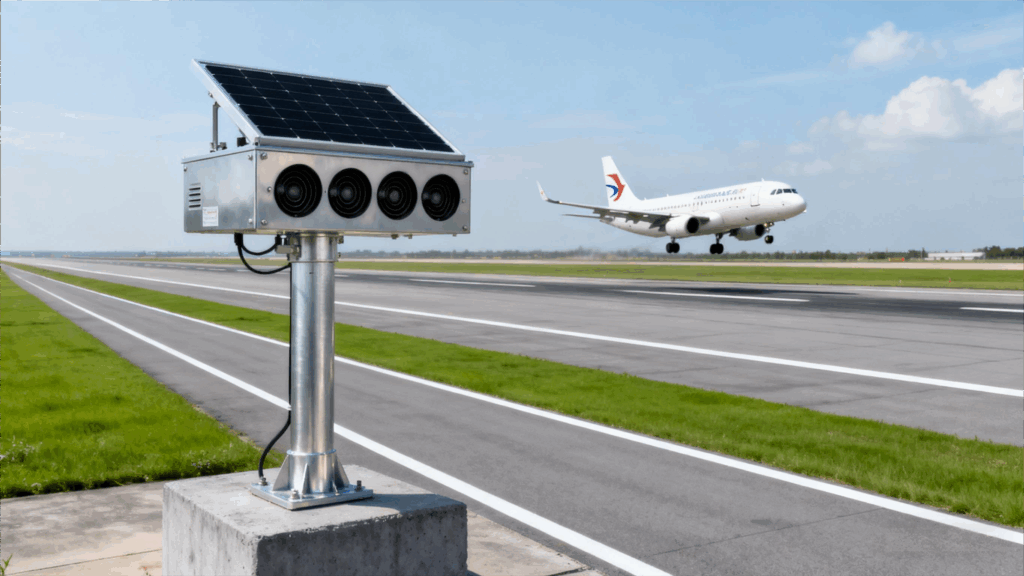
4. Other Applications: Addressing Diverse Bird Damage Issues
In warehousing and logistics centers, birds may enter storage areas to peck at grain or contaminate goods. Installing bird repellers safeguards cargo integrity. At historic buildings and scenic pavilions, bird droppings corrode architectural components and compromise landscape hygiene. Bird repellers reduce bird perching, lowering cleaning and maintenance costs. At fish ponds and aquaculture bases, birds prey on fry and mature fish. Bird repellers safeguard aquaculture yields.
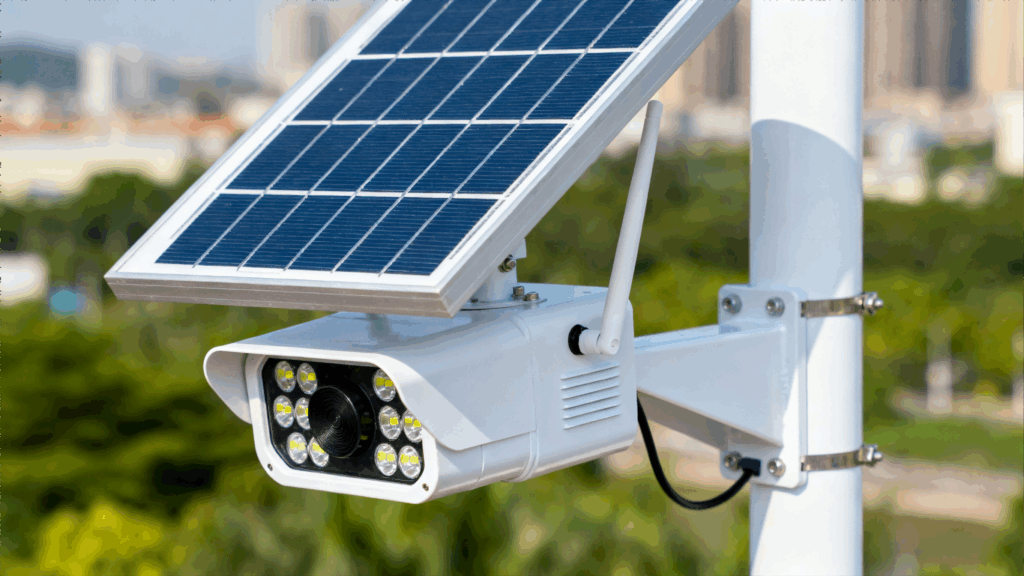
With numerous brands of solar-powered ultrasonic bird repellers on the market and varying product quality, consider the following points to avoid common pitfalls:
1. Focus on ultrasonic parameters to ensure effective coverage and results
First, examine the ultrasonic frequency range. Opt for products covering 15kHz-80kHz to effectively deter various bird species. Second, consider the effective coverage radius. Select based on the area of use—a single unit covering a 20m radius suffices for gardens, while airports or large farmlands require multiple units working together. Additionally, intelligent frequency modulation is crucial. Fixed frequencies risk adaptation by birds, whereas variable frequency ensures sustained repellent effectiveness.
2. Verify the solar power system to guarantee endurance
Prioritize monocrystalline silicon solar panels over polycrystalline silicon due to higher conversion efficiency (monocrystalline: approx. 18%-22%; polycrystalline: approx. 15%-18%). Lithium battery capacity should exceed 5000mAh to sustain operation during cloudy days or nighttime (typically supporting 3-7 days of device operation when fully charged, depending on power consumption). Verify the device includes overcharge and over-discharge protection to prevent battery damage and extend lifespan.
3. Prioritize protective performance for complex environments
Different scenarios demand varying levels of protection. For outdoor use, select devices with IP65 or higher waterproof ratings (IP65 indicates complete dustproofing and resistance to water jets) to prevent rain and dust from causing internal malfunctions. In cold regions, choose products with strong low-temperature endurance to ensure normal operation below -30°C. Additionally, device casings should ideally be made of ABS engineering plastic or aluminum alloy for corrosion and aging resistance, extending service life.
4. Select Reputable Brands and Prioritize After-Sales Service
Prioritize qualified brands with strong reputations. Verify that products possess quality inspection reports, patent certificates, and other credentials to avoid purchasing counterfeit or substandard goods. Simultaneously, focus on after-sales support, such as whether a warranty exceeding one year is provided and the response time for fault repairs. Long-term outdoor use inevitably leads to issues, and quality after-sales service minimizes subsequent complications. Additionally, review other users’ evaluations to understand the product’s actual performance before making a decision.
After selecting the appropriate product, correct installation and usage can further improve bird repellency and extend device lifespan. Note the following points:
1. Select Installation Location and Height Wisely
Avoid obstacles (e.g., trees, buildings) to ensure unobstructed ultrasonic transmission. In agricultural settings, install at elevated positions around orchards or in the center of fields for broader coverage. For power facilities, mount on safe tower locations to prevent interference with line maintenance. At airports, position well away from runway takeoff/landing zones to avoid disrupting aircraft signals. Recommended installation height is 1.5m–3m, matching typical bird flight altitudes to maximize ultrasonic effectiveness.
2. Regular Cleaning and Maintenance
Periodically clean solar panel surfaces of dust, leaves, bird droppings, and debris to maintain solar conversion efficiency (recommended weekly cleaning; increase frequency in harsh environments). Inspect lithium battery condition; replace batteries promptly if noticeable decline in endurance occurs. Check for damage to the device casing and wiring; repair any damage immediately to prevent rainwater ingress and internal short circuits.
3. Adjust parameters based on bird activity patterns
Bird activity patterns vary by season and time of day. Adjust the device’s operating mode according to actual conditions. For instance, during peak bird activity periods—such as the breeding season (spring) or foraging periods (fruit ripening season)—set ultrasonic intensity to maximum and reduce transmission intervals. At night when bird activity decreases, activate low-power mode to conserve energy. If birds in a specific area adapt to the current frequency, manually adjust the frequency range to maintain effective deterrence.
4. Avoid Impact on Humans and Other Organisms
Although ultrasonic waves are inaudible to humans, some sensitive individuals may experience discomfort from high-frequency sounds. Installation should avoid densely populated areas like residential windows and offices. Additionally, avoid placing devices in zones frequented by beneficial insects such as bees and butterflies. While ultrasonic waves have minimal effect on insects, ecological disturbance should be minimized whenever possible.
As awareness of ecological conservation and operational safety grows, solar-powered ultrasonic bird repellers are gradually replacing traditional methods. Their eco-friendly, efficient, energy-saving, and intelligent advantages make them the preferred solution for bird damage control across multiple sectors. These devices not only effectively reduce economic losses caused by bird damage and ensure safe operations in industries like power generation and aviation but also prioritize ecological preservation, achieving the goal of “repelling birds without harming them.”
Looking ahead, continuous technological advancements will drive solar-powered ultrasonic bird repellers toward greater intelligence and multifunctionality. Future iterations may integrate AI recognition technology for precise bird species identification and automated repellent strategy adjustments, or incorporate environmental monitoring capabilities (e.g., temperature, humidity, wind speed detection) to achieve integrated “bird repellent + monitoring” solutions. As these products become more widespread and refined, solar-powered ultrasonic bird repellers will enhance safety across diverse industries, fostering harmonious coexistence between humans and nature.
If you’re facing bird damage challenges, consider selecting a suitable solar-powered ultrasonic repeller. Let it safeguard your property and operational stability while pioneering a new era of eco-friendly, efficient bird control.

Salve, sono il webmaster di lecintech.com, Robert Luo, potete chiamarmi Robert. Ho anni di esperienza nel settore della disinfestazione. Siamo specializzati nella progettazione e nella produzione di repellenti per parassiti a ultrasuoni, repellenti per zanzare a ultrasuoni, repellenti per roditori a ultrasuoni, repellenti per animali a energia solare, trappole per parassiti, repellenti indossabili e altro ancora.